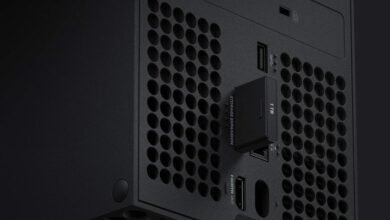Are Rising Prices the End of Game Consoles?

▼ Summary
– Current-generation consoles have seen unprecedented price increases post-launch, reversing the historical trend of prices decreasing over time.
– Industry experts agree consoles aren’t dying but acknowledge the console business model is fundamentally changing as manufacturers focus more on profitability.
– Global economic factors including inflation, tariffs, and supply chain issues are cited as reasons for price increases, though some argue companies are prioritizing profits.
– Console sales are declining and the market has matured, leading manufacturers to expand beyond hardware through multiplatform games and services.
– Consoles are shifting from entry-level gaming devices to premium products as mobile platforms become the primary entry point for new gamers.
The video game industry faces a pivotal moment as unprecedented price increases for major consoles challenge long-standing consumer expectations. Historically, manufacturing efficiencies led to price reductions over a console’s lifespan, but the current generation has broken this pattern. Both Microsoft and Sony have implemented significant price hikes across multiple regions, marking a dramatic shift from the traditional pricing model and raising questions about the long-term viability of dedicated gaming hardware.
In the United States, the base Xbox Series X now costs $150 more than its launch price, while the Xbox Series S has increased by $100. Similar adjustments have occurred in the United Kingdom, with the Series X rising by £50 and the Series S by £100. Sony has followed suit, increasing PlayStation 5 prices in both the US and European markets. This reversal of typical pricing trends means early adopters could potentially sell their launch-day consoles for a profit, a scenario unheard of in previous generations.
Industry analysts provide crucial perspective on whether this signals a terminal decline for consoles. Chris Dring, a respected games business journalist, urges calm, noting, “We’ve been here many times before in this industry. I remember when PC gaming was dead. I remember when handheld gaming was nobody is saying that today.” Piers Harding-Rolls of Ampere Analysis adds that “the death of the console has been discussed for almost two decades, but the business has continued to thrive.” Mat Piscatella from Circana Research confirms that “there will always be a market, at least for the foreseeable future, for shiny new consoles to play shiny new games locally on shiny new screens.” However, all three experts acknowledge that the fundamental business of console manufacturing and sales is undergoing significant transformation.
Multiple factors drive these price increases. Geopolitical instability, including trade conflicts and actual wars, has disrupted supply chains and increased manufacturing costs. High import tariffs, particularly those implemented during the Trump administration, have forced companies to absorb additional expenses for consoles and components manufactured outside the US. Broader economic challenges like global inflation and cost-of-living crises have affected markets worldwide. Microsoft cited “changes in the macroeconomic environment” when announcing its October price increases, while Sony pointed to “the backdrop of a challenging economic environment, including high inflation and fluctuating exchange rates” for its European price adjustments.
Beyond external pressures, companies face internal strategic decisions about profitability. Former Blizzard president Mike Ybarra suggested that “console price increases are not tariff issues, they are profit issues,” arguing that manufacturers are using economic conditions as justification for improving their bottom lines. Historically, platform holders accepted losses on hardware because they recouped profits through software sales and subscription services. As Dring explains, “Historically, platform holders have been willing to lose money on the hardware because they make it up in software sales, where the margins are made. But that equation doesn’t work as well in 2025.” Harding-Rolls confirms that “there is less appetite from the console companies to swallow the cost increases in the supply chain as there is more focus on profitability.”
Microsoft’s current generation strategy illustrates this shift. The company launched with aggressively priced hardware, taking significant losses to build its user base. When Xbox Series consoles failed to achieve expected sales volumes, Dring notes that “some of the months this year, Xbox has been posting some of the lowest sales figures in its entire history”, Microsoft made the unprecedented decision to publish major titles on rival PlayStation 5 platforms. This move acknowledged the reality that selling software to Sony’s larger installed base made more financial sense than continuing to absorb hardware losses for minimal market share gains.
Looking forward, experts express uncertainty about whether prices will stabilize or continue rising. Piscatella reminds us that “we’re not dealing with normalized market conditions at the moment,” while Harding-Rolls admits that while he hopes prices won’t increase further, “I wouldn’t count it out.” More significantly, analysts question whether we’ll ever return to traditional pricing cycles. Harding-Rolls suggests that “the pricing lifecycle which used to see console prices at 50 percent of the launch price at the end of the lifecycle is a thing of the past. I don’t see prices coming down routinely now.”
Despite these challenges, the industry shows signs of adaptation and resilience. The phenomenal success of Nintendo Switch 2 demonstrates continued consumer appetite for dedicated gaming hardware when the value proposition aligns with expectations. Subscription services and microtransactions have created new revenue streams that compensate for slower hardware sales. However, underlying concerns remain as console sales decline across the current generation, approaching historical lows in key markets like the United States.
The fundamental transformation Dring referenced becomes clearer when examining how consoles’ role in the gaming ecosystem has evolved. “When we grew up, consoles were the entry-level product into gaming,” he explains. “That’s where you started your gaming journey. Today, that’s mobile and tablets. Game consoles are now premium devices.” This shift means the average console gamer is older, prompting manufacturers to reconsider their strategies for attracting players from mobile platforms and serving an aging player base.
Companies are already exploring new hardware concepts that bridge traditional categories. Devices like Valve’s Steam Deck and Microsoft’s upcoming Xbox-branded ROG Ally X represent attempts to merge console convenience with PC flexibility. These hybrid approaches leverage the “buy once, play anywhere” philosophy while acknowledging that the dedicated console market may be maturing rather than growing.
The gaming industry continues to navigate extraordinary circumstances, from pandemic-driven boom-and-bust cycles to skyrocketing development costs and widespread industry layoffs. Console gaming appears to be undergoing permanent transformation rather than facing imminent extinction. As manufacturers expand their offerings beyond traditional hardware and reconsider their fundamental business models, the console’s place in the gaming landscape will likely continue evolving in response to these unprecedented challenges.
(Source: Euro Gamer)





